- Home
- John D. MacDonald
The Drowner
The Drowner Read online
Praise for John D. MacDonald
“My favorite novelist of all time.”
—DEAN KOONTZ
“For my money, John D. MacDonald’s Travis McGee is one of the great characters in contemporary American fiction—not crime fiction; fiction, period—and millions of readers surely agree.”
—The Washington Post
“MacDonald isn’t simply popular; he’s also good.”
—ROGER EBERT
“MacDonald’s books are narcotic and, once hooked, a reader can’t kick the habit until the supply runs out.”
—Chicago Tribune Book World
“Travis McGee is one of the most enduring and unusual heroes in detective fiction.”
—Baltimore Sun
“John D. MacDonald remains one of my idols.”
—DONALD WESTLAKE
“A dominant influence on writers crafting the continuing series character.”
—SUE GRAFTON
“The Dickens of mid-century America—popular, prolific and … conscience-ridden about his environment … a thoroughly American author.”
—The Boston Globe
“It will be for his crisply written, smoothly plotted mysteries that MacDonald will be remembered.”
—USA Today
“MacDonald had the marvelous ability to create attention-getting characters who doubled as social critics. In MacDonald novels, it is the rule rather than the exception to find, in the midst of violence and mayhem, a sentence, a paragraph, or several pages of rumination on love, morality, religion, architecture, politics, business, the general state of the world or of Florida.”
—Sarasota Herald-Tribune
BY JOHN D. MACDONALD
The Brass Cupcake
Murder for the Bride
Judge Me Not
Wine for the Dreamers
Ballroom of the Skies
The Damned
Dead Low Tide
The Neon Jungle
Cancel All Our Vows
All These Condemned
Area of Suspicion
Contrary Pleasure
A Bullet for Cinderella
Cry Hard, Cry Fast
You Live Once
April Evil
Border Town Girl
Murder in the Wind
Death Trap
The Price of Murder
The Empty Trap
A Man of Affairs
The Deceivers
Clemmie
Cape Fear (The Executioners)
Soft Touch
Deadly Welcome
Please Write for Details
The Crossroads
The Beach Girls
Slam the Big Door
The End of the Night
The Only Girl in the Game
Where Is Janice Gantry?
One Monday We Killed Them All
A Key to the Suite
A Flash of Green
The Girl, the Gold Watch & Everything
On the Run
The Drowner
The House Guest
End of the Tiger and Other Stories
The Last One Left
S*E*V*E*N
Condominium
Other Times, Other Worlds
Nothing Can Go Wrong
The Good Old Stuff
One More Sunday
More Good Old Stuff
Barrier Island
A Friendship: The Letters of Dan Rowan and John D. MacDonald, 1967–1974
The Travis McGee Series
The Deep Blue Good-by
Nightmare in Pink
A Purple Place for Dying
The Quick Red Fox
A Deadly Shade of Gold
Bright Orange for the Shroud
Darker Than Amber
One Fearful Yellow Eye
Pale Gray for Guilt
The Girl in the Plain Brown Wrapper
Dress Her in Indigo
The Long Lavender Look
A Tan and Sandy Silence
The Scarlet Ruse
The Turquoise Lament
The Dreadful Lemon Sky
The Empty Copper Sea
The Green Ripper
Free Fall in Crimson
Cinnamon Skin
The Lonely Silver Rain
The Official Travis McGee Quizbook
The Drowner is a work of fiction. Names, characters, places, and incidents either are the product of the author’s imagination or are used fictitiously. Any resemblance to actual persons, living or dead, events, or locales is entirely coincidental.
2013 Random House eBook Edition
Copyright © 1963 by John D. MacDonald.
Introduction copyright © 2013 by Dean Koontz
All rights reserved.
Published in the United States by Random House Trade Paperbacks, an imprint of The Random House Publishing Group, a division of Random House, Inc., New York.
RANDOM HOUSE TRADE PAPERBACKS and colophon are trademarks of Random House, Inc.
A shorter version of this novel appeared in Cosmopolitan under the same title. Copyright © 1963 by The Hearst Corporation.
eISBN: 978-0-307-82693-0
www.atrandom.com
Cover design: Joe Montgomery
v3.1
Contents
Cover
Other Books by This Author
Title Page
Copyright
Introduction
Chapter One
Chapter Two
Chapter Three
Chapter Four
Chapter Five
Chapter Six
Chapter Seven
Chapter Eight
Chapter Nine
Chapter Ten
Chapter Eleven
Chapter Twelve
About the Author
The Singular John D. MacDonald
Dean Koontz
When I was in college, I had a friend, Harry Recard, who was smart, funny, and a demon card player. Harry was a successful history major, while I passed more time playing pinochle than I spent in class. For the three and a half years that I required to graduate, I heard Harry rave about this writer named John D. MacDonald, “John D” to his most ardent readers. Of the two of us, Harry was the better card player and just generally the cooler one. Consequently, I was protective of my position, as an English major, to be the better judge of literature, don’t you know. I remained reluctant to give John D a look.
Having read mostly science fiction, I found many of my professors’ assigned authors markedly less exciting than Robert Heinlein and Theodore Sturgeon, but I was determined to read the right thing. For every Flannery O’Connor whose work I could race through with delight, there were three like Virginia Woolf, who made me want to throw their books off a high cliff and leap after them. Nevertheless, I continued to shun Harry’s beloved John D.
Five or six years after college, I was a full-time writer with numerous credits in science fiction, struggling to move into suspense and mainstream work. I was making progress but not fast enough to suit me. By now I knew that John D was widely admired, and I finally sat down with one of his books. In the next thirty days, I read thirty-four of them. The singular voice and style of the man overwhelmed me, and the next novel I wrote was such an embarrassingly slavish imitation of a MacDonald tale that I had to throw away the manuscript.
I apologized to Harry for doubting him. He was so pleased to hear me proclaiming the joys of John D that he only said “I told you so” on, oh, twenty or thirty occasions.
Over the years, I have read every novel by John D at least three times, some of them twice that often. His ability to evoke a time and place—mostly Florida but also the industrial Midwest, Las Vegas, and elsewhere—was wonderful, and he coul
d get inside an occupation to give you the details and the feel of it like few other writers I’ve ever read. His pacing was superb, the flow of his prose irresistible, and his suspense watch-spring tight.
Of all his manifest strengths as a writer, however, I am most in awe of his ability to create characters who are as real as anyone I’ve met in life. John D sometimes paused in the headlong rush of his story to spin out pages of background on a character. At first when this happened, I grumbled about getting on with the story. But I soon discovered that he could make the character so fascinating that when the story began to race forward again, I wanted it to slow down so I could learn more about this person who so intrigued and/or delighted me. There have been many good suspense novelists in recent decades, but in my experience, none has produced characters with as much humanity and truth as those in MacDonald’s work.
Like most who have found this author, I am an admirer of his Travis McGee series, which features a first-person narrator as good as any in the history of suspense fiction and better than most. But I love the standalone novels even more. Cry Hard, Cry Fast. Where Is Janice Gantry? The Last One Left. A Key to the Suite. The Drowner. The Damned. A Bullet for Cinderella. The Only Girl in the Game. The Crossroads. All These Condemned. Those are not my only favorites, just a few of them, and many deal with interesting businesses and occupations. Mr. MacDonald’s work gives the reader deep and abiding pleasure for many reasons, not the least of which is that it portrays the contemporary life of his day with as much grace and fidelity as any writer of the period, and thus it also provides compelling social history.
In 1985, when my publisher, Putnam, wanted to send advance proof copies of Strangers to Mr. MacDonald among others, I literally grew shaky at the thought of him reading it. I suggested that they shouldn’t send it to him, that, as famous and prolific as he was, the proof would be an imposition on him; in truth, I feared that he would find the novel unsatisfying. Putnam sent it to him anyway, and he gave us an enthusiastic endorsement. In addition, he wrote to me separately, in an avuncular tone, kindly advising me how to avoid some of the pitfalls of the publishing business, and he wrote to my publisher asking her to please carefully consider the packaging of the book and not condemn it to the horror genre. She more or less condemned it to the genre anyway, but I took his advice to heart.
In my experience, John D. MacDonald, the man, was as kind and thoughtful as his fiction would lead you to believe that he must be. That a writer’s work accurately reflects his soul is a rarer thing than you might imagine, but in his case, the reflection is clear and true. For that reason, it has been a special honor, in fact a grace, to be asked to write this introduction.
Reader, prepare to be enchanted by the books of John D. MacDonald. And Harry, I am not as much of an idiot as I was in years gone by—though I know you won’t let me get away with claiming not to be to any degree an idiot anymore.
One
One day after it was all over, after it was ended and done and there was no going back to change any part of it, Paul Stanial realized, checking the dates, that he and the Hanson woman had gone swimming on the same day, at the same hour, over a hundred miles apart, and had walked from the same noontime simmer of May in Florida, across sand into coolness. But on that day he had never heard of her, or even of the grove-country lake in which she had died that day.
Nevertheless, it had changed his life at a time it most desperately needed changing, and he found a strange significance in the fact that her swim in that silent lake had ended her life, and that his swim off that junk beach below Lauderdale had been part of the procedures that were sickening him, and had led him to demand the change which brought his life into tangent with hers, after hers was over.
His was a cool and watchful mind, full of measurements and dimensions, capable of fits of black rage over which he had achieved a precarious control, but not prone to make fanciful relationships between unrelated events. By the time he could see this fateful coincidence, he knew just how it had been for her. And though he never saw Lucille Hanson alive, by then he had talked to those who had known her, and he had seen where it had happened, and he knew the flavors of her mind and spirit from reading her letters. He saw it over and over, like an arbitrary eye suspended perhaps twenty feet above the shoreline of Dayker’s Lake. He saw the old car nose down through the brush on the sand road in the bright noon-time heat and stop, facing the lake. He saw the woman get out, leaving the car door open, and take off her denim wrap-around skirt and toss it into the car. She wore a white swim suit and sandals. Her hair was fair, a golden white, and her body was tanned. Her rather narrow face, long throat, small breasts and long slender waist gave her a deceptive look of fragility. But there was a sturdy breadth to her round strong hips, and her thighs and calves were rounded and heavy. He saw her mash a mosquito against the top of a solid thigh, and reach into the car, get her gear, slam the car door and walk quickly to the edge of the small sandy beach. He saw her spread her towel, put the other articles down, step out of her sandals, and then walk to the water, tucking her pale hair into the blue swim cap, her expression that of a woman alone, slightly solemn, preoccupied, thinking of the two men who loved her, perhaps, and the one she loved.
And then the objective eye turned and he saw her swim out, the strong legs pumping, the arms reaching smoothly, the head turning at the right beat to take the deep easy breath. From that vantage point he watched just how it was done to her, saw how she was given no chance at all. He watched below then, down in the amber murk of twenty feet, watched her come down slowly and alone when it was over for her, turning, unmarked except for that emptiness of death upon her face, sinking to the weeds and mud of the bottom, rebounding slightly, turning in a random current, and then settling, sprawled on her side, eyes open, an edge of white teeth showing, a last reflex moving the left hand, some gassy bubbles and then weedy silence in the brown-gold depths.
But his own swim that same day, that same hour, on a trashy dazzle of beach at Hallandale, adjacent to glossy motels, had been entirely different in flavor. The agency had used him on this one because, he realized with a certain sourness, he looked enough like the other beach bums to be next to invisible in the throng. His natural skin tone was dark enough to take and hold a deep tan. His hair was black and his deep-set eyes a clear, bright blue. He was tall and long-legged, with flat hips, a lithe, narrow waist, but a deep chest, short broad neck, and wide, heavily muscled shoulders. From a distance his trimness made him look years younger than he was.
The assignment was a soft, beefy, youngish man from Bloomfield Hills, Michigan, named Geoffrey Rogers. He had married a monied woman who was anxious to divorce him, but Rogers was holding out for a private settlement before agreeing. They’d been given the word he was taking a little break in the Miami area with a blonde hostess from a Detroit night spot. The office had traced him through the phone number he had given the airlines for his return reservation, and had found him holed up in cabana unit G of the Beachscape Motel, registered as Mr. and Mrs. R. Jeffries of Lansing.
Paul Stanial had been detailed to pick up all the client would need to pry herself loose from Rogers with minimum expense. So he checked into the cheapest single at the Beachscape so as to have the run of the place and the beach. He wired a battery-driven, 35-millimeter camera into a small green plastic tackle box, loaded with a 36-exposure roll of Kodachrome, and cut a hole under the side latch for the wide-angle lens. He cut another hole on top next to the carrying handle, big enough so he could stick his index finger through it and punch the shutter button. Properly set for bright sunlight, he was in focus from four feet to infinity, and the wide-angle simplified the aiming problem. They were so sexually engrossed in each other, he was in no danger of being detected as he took his shots of them, some from as close as five feet. She was a vapid-faced woman with a rich body just beginning to go to seed. They sprawled and necked on their beach towels in a meaty abandon, while he sunned nearby and caught some of the more incri
minating pawings. He took them leaving and entering their cabana, and he got one on the terrace of the cabana with Rogers supine on a white sun chaise, the woman straddling his thighs, facing him, leaning toward him, his hand under her bikini top and her hand rammed up the leg of his swim trunks. Moments later they got up and went into the cabana and drew the draperies across the picture window. Stanial put the camera in his room and went for a swim. He swam out and floated on the swells and wondered how many waves it would take to wash away the stink of that pair, and suddenly he knew he couldn’t take much more of this kind of assignment. Something had to change before he found he had stopped giving a damn what he had to do, so long as he was paid.
He took the film to a special order lab, asked for one color slide of each exposure, and waited fifty minutes in an air-conditioned bar down the street while they ran it through the electronic processing equipment. He signed the charge slip, went out and sat on a bench and held each slide up to the light. They were no example of the art of photography, but they clearly established the identities and the specific relationship between the pair.
He went back to the office and turned the slides and the photostat of the registration over to Kippler and sat while Kippler looked carefully at each picture.
“This broad is really stacked,” Kippler murmured. “And eager. Say, this one nails it good, her opening the door and the number showing up good on the door, and him with the towels and stuff. By the way, Charlie got a Thermofax of the car rental sheet. Rogers used his own name on that so he could use his credit card.” He pursed his lips and studied one picture. “There’s too much in focus, so it wasn’t telephoto. What’d you do, fella? Join the group?”
“Is that the next step?”
Kippler looked at him thoughtfully. “What’s chewing you?”
“I’ve had too much of this kind of thing, one after the other. I’m fed up to here with it. Is this the only kind of business you get down here?”

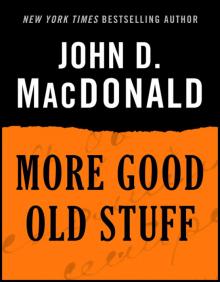 More Good Old Stuff
More Good Old Stuff The Long Lavender Look
The Long Lavender Look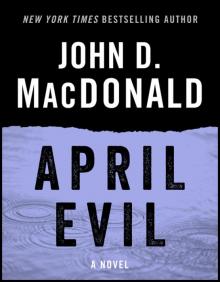 April Evil
April Evil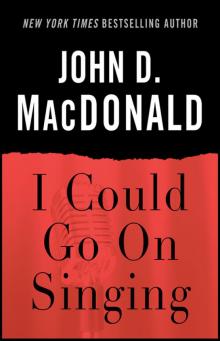 I Could Go on Singing
I Could Go on Singing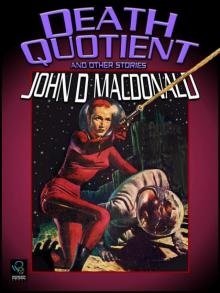 Death Quotient and Other Stories
Death Quotient and Other Stories Murder in the Wind
Murder in the Wind The Quick Red Fox
The Quick Red Fox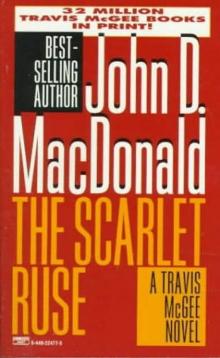 The Scarlet Ruse
The Scarlet Ruse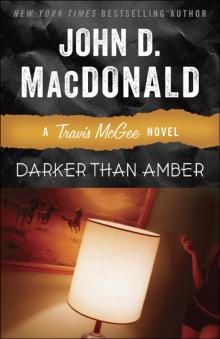 Darker Than Amber
Darker Than Amber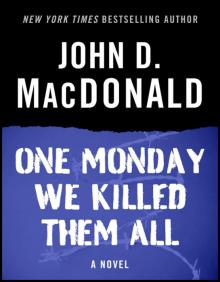 One Monday We Killed Them All
One Monday We Killed Them All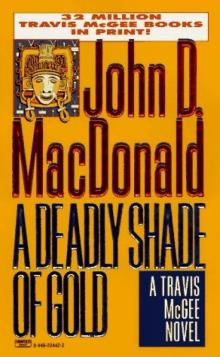 A Deadly Shade of Gold
A Deadly Shade of Gold The Girl, the Gold Watch and Everything
The Girl, the Gold Watch and Everything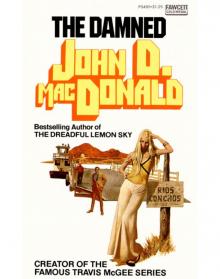 The Damned
The Damned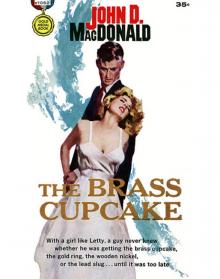 The Brass Cupcake
The Brass Cupcake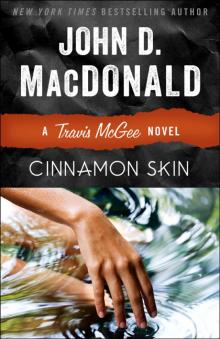 Cinnamon Skin
Cinnamon Skin Bright Orange for the Shroud
Bright Orange for the Shroud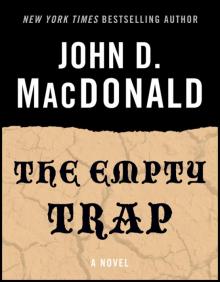 The Empty Trap
The Empty Trap Where Is Janice Gantry?
Where Is Janice Gantry?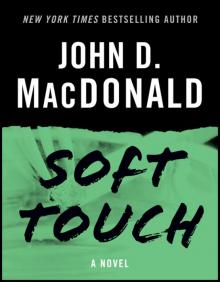 Soft Touch
Soft Touch Condominium
Condominium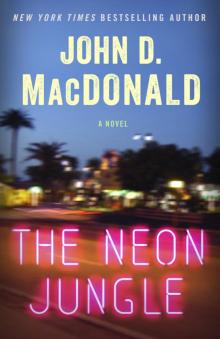 The Neon Jungle
The Neon Jungle Girl In The Plain Brown Wrapper
Girl In The Plain Brown Wrapper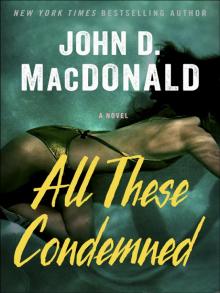 All These Condemned
All These Condemned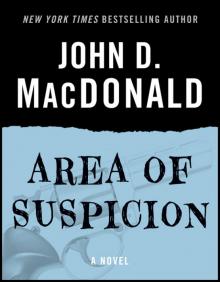 Area of Suspicion
Area of Suspicion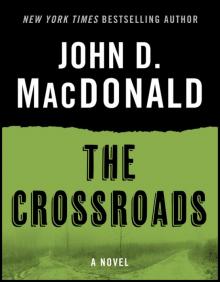 The Crossroads
The Crossroads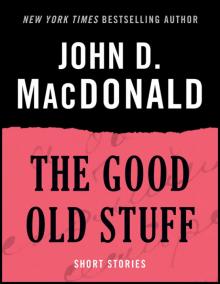 The Good Old Stuff
The Good Old Stuff The Girl in the Plain Brown Wrapper
The Girl in the Plain Brown Wrapper The Beach Girls
The Beach Girls A Purple Place For Dying
A Purple Place For Dying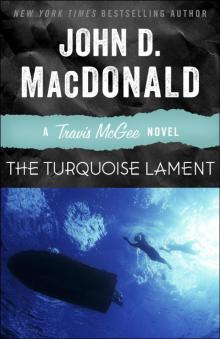 The Turquoise Lament
The Turquoise Lament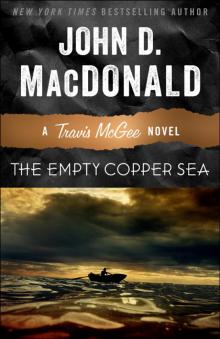 The Empty Copper Sea
The Empty Copper Sea You Live Once
You Live Once The House Guests
The House Guests A Bullet for Cinderella
A Bullet for Cinderella A Man of Affairs
A Man of Affairs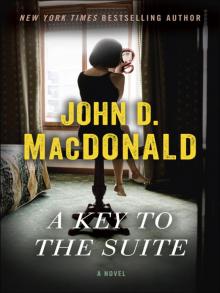 A Key to the Suite
A Key to the Suite Please Write for Details
Please Write for Details Free Fall in Crimson
Free Fall in Crimson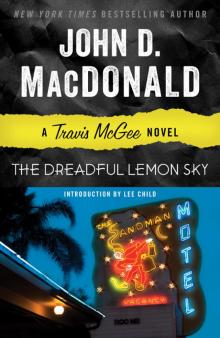 The Dreadful Lemon Sky
The Dreadful Lemon Sky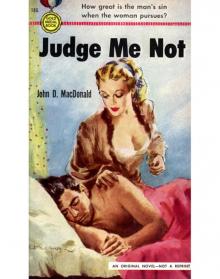 Judge Me Not
Judge Me Not The Price of Murder
The Price of Murder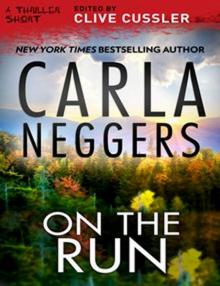 On the Run
On the Run The Deep Blue Good-Bye
The Deep Blue Good-Bye The Only Girl in the Game
The Only Girl in the Game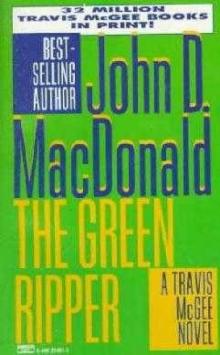 The Green Ripper
The Green Ripper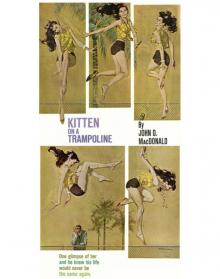 Kitten on a Trampoline
Kitten on a Trampoline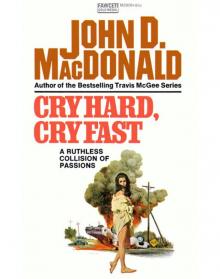 Cry Hard, Cry Fast
Cry Hard, Cry Fast A Flash of Green
A Flash of Green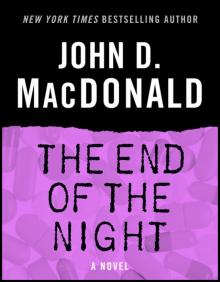 The End of the Night
The End of the Night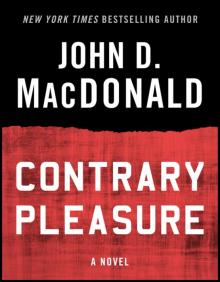 Contrary Pleasure
Contrary Pleasure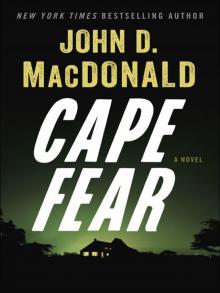 Cape Fear
Cape Fear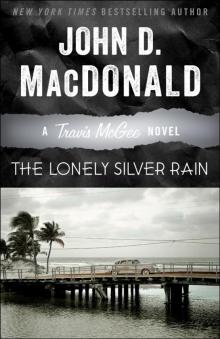 The Lonely Silver Rain
The Lonely Silver Rain Slam the Big Door
Slam the Big Door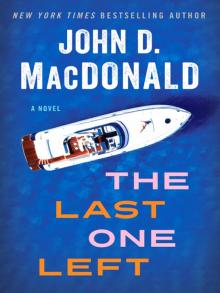 The Last One Left
The Last One Left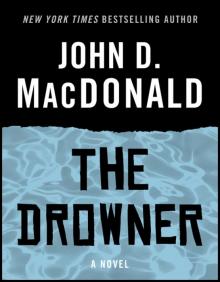 The Drowner
The Drowner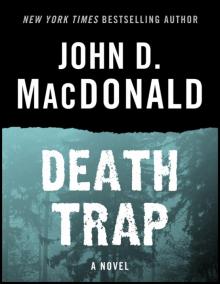 Death Trap
Death Trap Wine of the Dreamers: A Novel
Wine of the Dreamers: A Novel A Tan and Sandy Silence
A Tan and Sandy Silence One Fearful Yellow Eye
One Fearful Yellow Eye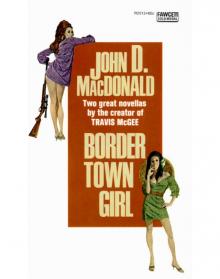 Border Town Girl
Border Town Girl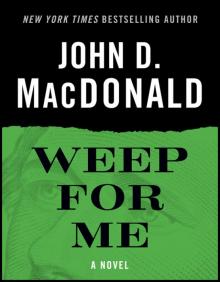 Weep for Me
Weep for Me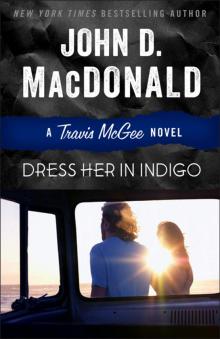 Dress Her in Indigo
Dress Her in Indigo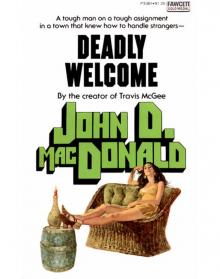 Deadly Welcome
Deadly Welcome Cancel All Our Vows
Cancel All Our Vows Murder for the Bride
Murder for the Bride End of the Tiger
End of the Tiger